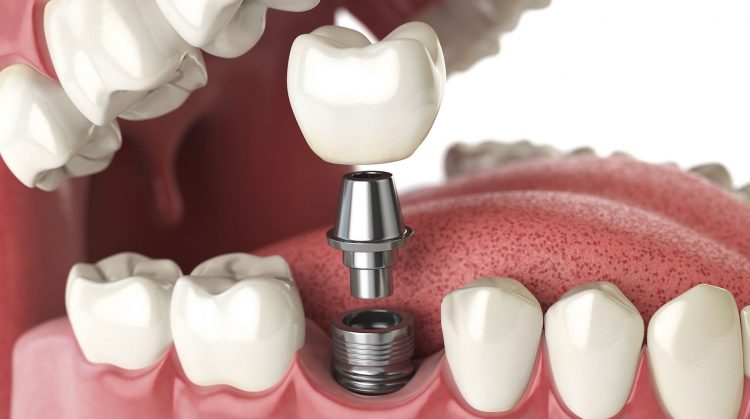
June 29, 2022
Why do we need a specialized doctor for treatment?

If you’re looking for ways to replace one or more lost teeth, debunking dental implant myths is a great place to start.
Humankind has been dealing with replacing missing teeth for over 1500 years, beginning with the Mayans of North and Central America, who successfully employed seashells to restore lost teeth. This protracted and often colorful—history of implantology (the science of dental implants) is the actual basis that implants are now the most advanced tooth replacement alternative available.
So, while you explore alternatives for replacing lost teeth, here are 10 dental implant misconceptions to be aware of. When combined with facts, you may utilize this knowledge to better determine the correct option for restoring your smile.
We are not sure if the first cosmetic dental innovators aimed for beauty or function, but we know that implants, like real teeth, reach deeper than the epidermis.
First, it is important to know the anatomy of your tooth structure. Natural teeth contain live roots underneath your gums that convey the beneficial force of biting and keeping your teeth safely fastened. The constructive pressure of chewing keeps your jawbone full, thick, and strong, similar to how weight-bearing workouts improve your bones.
Aside from the cosmetic problem of changing the shape of your smile, one of the most unfavorable adverse effects of missing teeth is loss of bone. Tooth loss lessens the level of beneficial stress your jaw gets, causing it to contract and accumulate back into the body. As the bones begin to fade, the lips and cheeks lack structure and support, giving the bottom region of the face a hollow or sunken appearance.
Unlike dentures and bridges, which only restore the visible portion of the teeth (the crown), dental implants mimic the full framework of the tooth, along with the tooth root. This precise imitation provides them the distinct and desired advantages of restoring the attractiveness of your smile, reducing bone loss, and retaining the form and structure of your mouth and face.
Implants are precisely created from tooth-colored components to resemble the form, shade, and shine of any existing natural teeth. A dental implant repair can provide you with a long-lasting smile that appears and feels perfectly natural with proper maintenance.
Dental implants may be an appropriate strategy for those who lack one or more teeth. Your dentist will install a singular dental implant to sustain a customized dental cap to restore a single tooth. Your dentist in Chandler will carefully put 2 to 8 implants to anchor a custom-made tooth bridge or an overdenture for multiple teeth or a whole arch of teeth.
Though the rate of tooth loss increases with age (30% of individuals between the ages of 65 and 74 have little or no tooth structure), an astonishing 178 million American individuals are missing at least one tooth, with 40 million lacking all of their teeth. While dental implants are not usually recommended for children or teenagers with developing jawbones, they can provide a long-lasting tooth replacement alternative for people of any age.
Implants, which bond into the jawbone (a process known as osseointegration), mimic the durability, functionality, morphology, and look of natural teeth and are the most durable alternative for replacing lost teeth.
Implantology is now an incredibly effective medical practice due to its long and comprehensive development of techniques through observation and experimentation. Dental implants have a success rate of 95 to 98 percent when using contemporary medical advances and biomedical applications equipment.
Although dental implants necessitate surgical intervention, the skillful use of contemporary anesthesia, numbing, and surgical procedures and technology enhances your comfort and recovery. Implant is often performed as an outpatient procedure under local anesthetic, with the choice of sedation dentistry to encourage maximum comfort. Regular doses of over-the-counter pain medicines are typically all that is required during the first few weeks when combined with easy self-care methods such as rinsing with salt water. After surgery, many patients resume work and daily activity within two to three days.
After your implant placement recovery is complete, care for them is similar to looking for your healthy teeth or conventional dental work (such as crowns, bridges, and dentures). Your implantation can easily endure for years with basic dental care, everyday cleanliness, and periodic prosthesis replacement.
Your smile benefits your physiological, mental, and social well-being. As a result, missing one or more teeth due to injury or rotting can have a significant influence on your general hygiene, convenience, and self-esteem. By investing in dental implants, you may regain one of your most important assets and live your life with more self-confidence, independence, and well-being.
Peace of Mind Dental Studio is here to assist you in locating a long-lasting tooth replacement solution that preserves the youthful appearance of your smile while also meeting your specific individual demands. Schedule an appointment to discover more about your options for restoring lost teeth in Chandler, AZ.